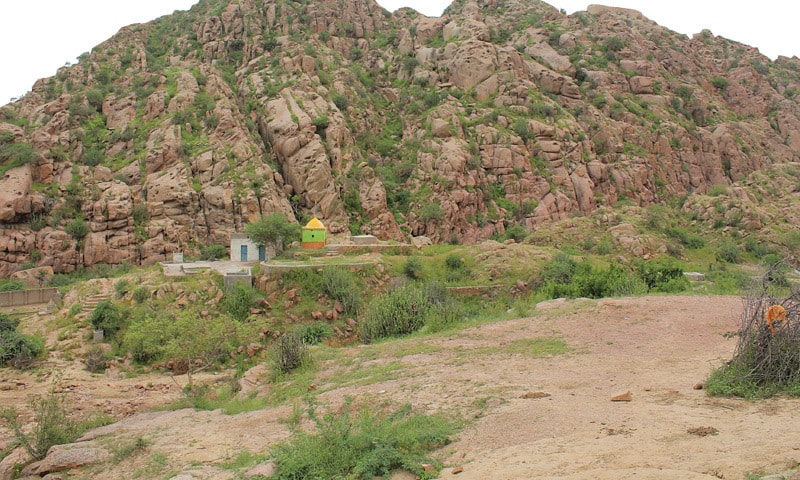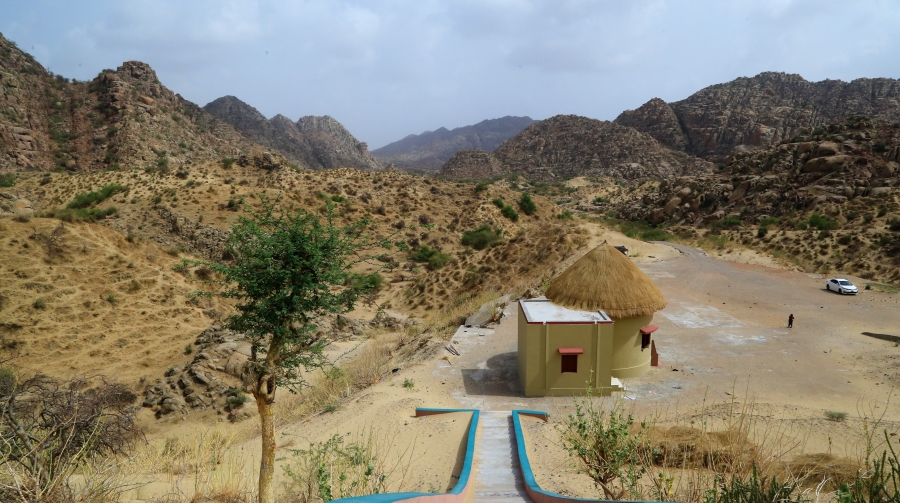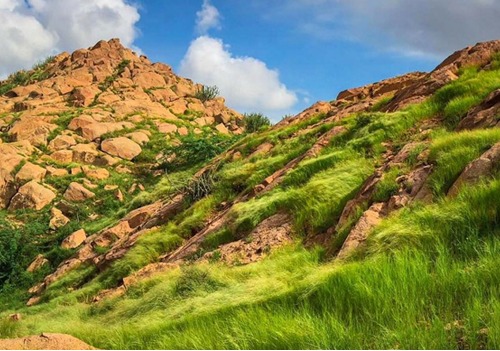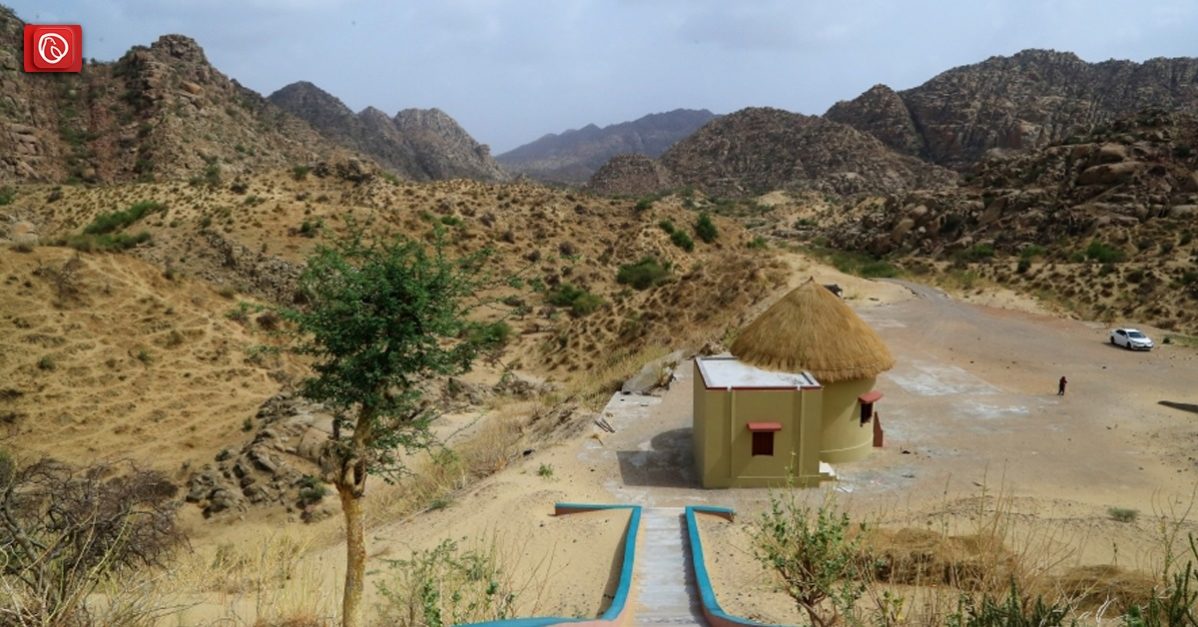If you are an adventurer and love exploring the surroundings, we suggest you visit Karoonjhar Mountains in Sindh.
The name “Karoonjhar” is a combination of two Sindhi words: karo, which translates to “black,” and “jhar”, which is the Sindhi word for “dots.” Some experts believe that the rock formations in the mountains near Nagarparkar, Sindh could be somewhere between 3.5 and 5 billion years old.
The mountains are located in Sindh. In addition to having this geographical significance, the area also has significant relevance from an archaeological point of view.
Overview of Karoonjhar Mountain

In Sindh, Pakistan, the Karoonjhar Mountain can be found on the extreme southeastern border of the Tharparkar district. They are one of the most famous mountains in Pakistan. The mountain range is roughly 19 kilometres long, reaches a height of 305 metres, and is home to enormous amounts of Chinese clay and granite.
Because it is so abundant in deposits and plants with therapeutic properties, Karoonjhar is of great economic importance to the people who live in the surrounding area.
Locals have a proverb that says “Karoonjhar delivers a hundred kilos of gold regularly,” which is an indication of how economically valuable this mountain is.
The natives make use of the numerous plants that are rich in medicinal properties and can treat a wide variety of illnesses. Among these are khokhro, gun wel, satawari, jhangli basar (also known as wild onion), shiv jati, uth kanthi, gogaroo, and a great number of other names.
Additionally, the region is home to a number of rivers and streams that are only active during the monsoon season. Therefore, the Karoonjhar mountains not only play an important role in the environment of Nangar Parkar, but they also play an important role in the ecosystem of the entire world, and the only way for them to continue to play a role is if they are protected.
History of Karoonjhar Mountain

Karoonjhar is one of the most visited historical places in Pakistan. It is mentioned in a number of poems written in both the Sindhi and Gujarati languages. Myths and folklores pertaining to Hothlal Pari (the fairy of nature), Odho Jam (the lore of the Sindhis), and Bherio Garori (the wolf’s ring) are considered to fall under this area.
In times past, Karoonjhar was also well-known by its former name of “Kinro.” The mountain range is home to a number of historically significant locations, including Bhodeser Talao, Alakh Wao (also known as the hidden well), Anchlechure, Sardaro, Gao Mukhi, Punraj Gadr, Nani, Chandan gadr, Bhaun jo bheesro, Jharno, and Bhaunro.
Many people from the past were sent to the Karoonjhar by the monarchs of neighbouring states as a punishment for their crimes. The mountain range was previously a centre of Jainism in the surrounding area. There are at least 108 holy places scattered throughout the surrounding hills.
The area that is now a desert served as a port and a business centre for Jains, who made up the business class. After that, an earthquake in Parinagar, which was the primary shipping port at the time, altered the terrain of the area, compelling the Jains to relocate to the modern-day Indian regions of Kutch and Bhuj.
They had constructed a number of temples atop Karoonjhar Mountain, as well as in Nagarparkar and Parinagar, prior to their departure.
Location of Karoonjhar Mountain

This mountain range can be found in Nagarparkar, close to the district of Tharparkar, on the northern side of the Rann of Kutch. Granite makes up the majority of its composition, and it is possible that they are an extension of the Aravalli Range in India.
The Aravalli range was formed during the Archean period, making it one of the rock formations with the longest geologic history. According to the estimates of various authorities, the formation of these rocks took place sometime between 3.5 and 5 billion years ago.
The length of the mountain range is around 19 kilometers, and its height is 305 meters. To the east of the main range are a series of hills that have scant amounts of flora covering them. These hills are the source of four different types of water: two permanent streams, Achleshwar and Sardharo, and two temporary streams, Bhetiani and Gordhro, which only flow during the wet season.
How to Reach There?
Around 132 kilometres to the southeast of Mithi City in Sindh Province, the mountain range can be reached by travelling along Islamkot Road. This is also the most efficient route to go to the Karoonjhar Mountains in Sindh if you are coming from a major city like Karachi or Hyderabad, which are both located in Sindh. You might also make a pit stop at Mithi and carry on after you’ve seen all the city has to offer.
This location offers convenient access to several important roadways in the surrounding area. Because of this, it is one of the tourist attractions in Sindh that is the easiest to reach. If you start your journey in Karachi, National Highway 5 will take you to your destination with the quickest method possible.
On the other side, the Karoonjhar Mountains are around 350 kilometres away from Hyderabad. In this aspect, the Hyderabad-Badin Highway is your best option because it will get you there in around 5.5 hours less time than any other route.
The Weather of the Karoonjhar Mountains
The Karoonjhar Dam, which is currently under construction, would provide residents of the Nagarparkar area with access to water. Rainwater collects atop the mountain during the monsoon season and eventually makes its way to the Rann of Kutch via more than twenty different streams, including Bhatiani, Maoo, Gordaro, Ranaser, Sukhpur, Ghatiari, Madanwah, Moondaro, Bhodeser, Lolrai, Drah, and Puranwah.
The rough topography contributes to the harshness of the climate in this mountain range. Only August and September are bearable temperatures because of the monsoon.
Karoonjhar Mountains – A sanctuary
Not only are these hills valuable to the indigenous people, but they are also important to the animals. In addition to providing a secure haven for peacocks, endangered deer, jackals, wolves, and hyenas, the location is home to a rich diversity of flora and wildlife.
Much like the people who live there, these plants and animals appear to have established deep roots in every crevice and rock of Karoonjhar.
For more information, visit Graana.com




